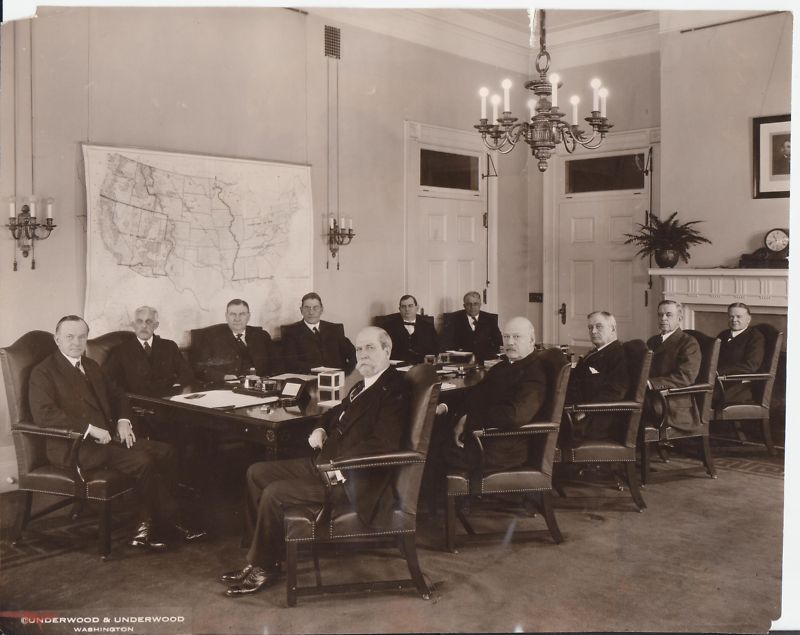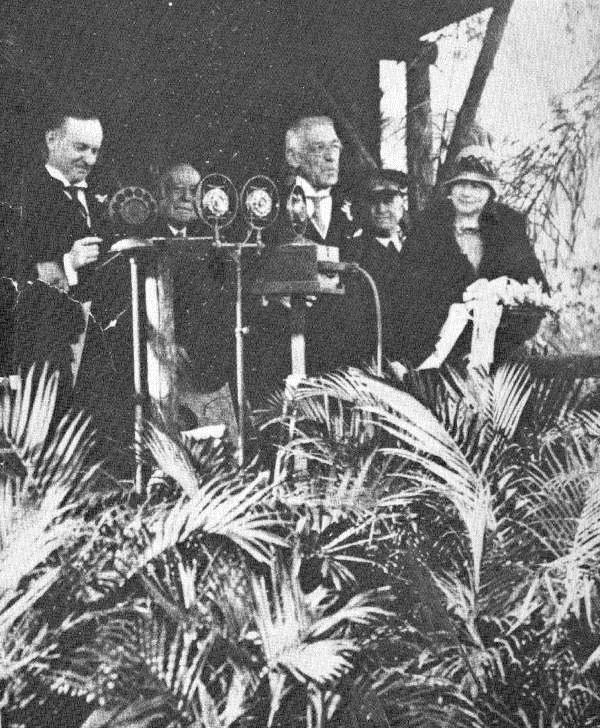
President Coolidge standing beside Edward Bok. Is that the President smiling? Perhaps he is reading that phrase in the Dedication Address which mentions smiling at the absurdity of those who engender class envy in this country.
On their second visit to Florida near the close of his presidency (the first being en route to Havana the previous year), Calvin and Grace Coolidge came to Lake Wales to dedicate the Mountain Lake Sanctuary and Bok Singing Tower to the American people. Some of his reflections on that occasion are given here,
“These grounds which we are dedicating to-day are another extension of this rapidly developing movement: It has been designated as a sanctuary because within it people may temporarily escape from the pressure and affliction of the affairs of life and find that quiet and repose which comes from a closer communion with the beauties of nature. We have not secured the benefits which I have enumerated without being obliged to pay a price. The multiplicity and the swiftness of the events with which we are surrounded exhaust our nervous energy. The constant impact upon us of great throngs of people of itself produces a deadening fatigue. We have a special need for a sanctuary like this to which we can retreat for a time from the daily turmoil and have a place to rest and think under the quieting influence of nature and of nature’s God.
“It is not only through action, but through contemplation that people come to understand themselves. Man does not live by bread alone. This thought is expressed in the motto of the sanctuary in the words of John Burroughs: ‘I come here to find myself. It is so easy to get lost in the world.’ We are so thickly crowded with the forest of events that there is not only danger that we can not see the trees, but that we may lose our sense of direction. Under the influence of these beautiful surroundings we can pause unhampered while we find out where we are and whither we are going. Those who come here report the feeling of peace which they have experienced. In the expression of an ancient writer, it is a place to which to invite one’s soul, where one may see in the landscape and foliage, not what man has done, but what God has done…
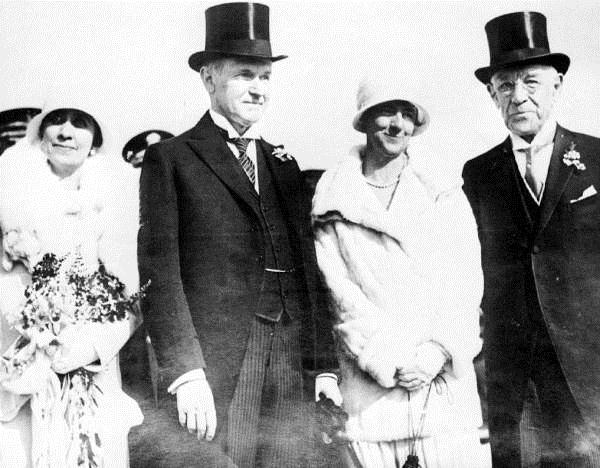
L to R: First Lady Grace Coolidge, President Coolidge, Mrs. Mary Louise Curtis Bok and Mr. Edward William Bok, February 1, 1929.
“The main purpose of this sanctuary and tower is to preach the gospel of beauty. Although they have been made possible through the generosity of Mr. Edward W. Bok, he does not wish them to be considered as a memorial or a monument. While it has been his purpose to give some expression here to his own love of the beautiful, in form, in color, and in sound, he has also sought to preserve the quiet majesty of the trees, increase the display of coloring in the flowers, and combine stone and marble in the graceful lines of the tower, all in a setting surrounded by green foliage and reflected in. sparkling waters over which the song of the nightingale will mingle with the music of the bells…
“This sanctuary and tower are not only endowed with a beauty of their own, but they are a representation of the beneficent spirit of the giver. They are another illustration that the men of wealth of the United States are not bent on the accumulation of money merely for its own sake, or that they may use it in selfish and ostentatious display. A most cursory examination of the facts would soon disclose that our country leads the world in its charities and endowments. It would be difficult to recall any line of endeavor capable of ministering to human welfare, not only in our own country but in many places abroad, which is not being helped by the generosity of our people of wealth. Not only that, but the charities of this Nation stand on a plane which is occupied by them alone. They have never been tainted with any effort to hold back the rising tide of a demand for the abolition of privilege and the establishment of equality, but have rather been the result of a sincere philanthropy. They have not come from any class consciousness; certainly, not from any class fear. They represent in all its beauty and purity the love of man and the desire to benefit the human race. We have a strong sense of trusteeship. While giving every credit to the genius of management, and holding strongly to the right of individual possessions, we realize that to a considerable extent, wealth is the creation of the people, and it is fitting; as in this case, that it should be expended for their material, intellectual, and moral development..
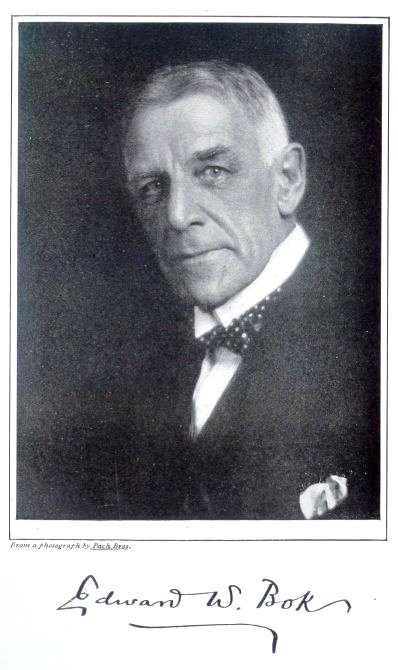
Dutch-born, Mr. Bok came to America at the age of six and worked his way up from a New York bakery to editor of the Ladies Home Journal, where he served for thirty years. The man had a life-long fascination with natural beauty and artistic expression. He accomplished much and gave much in return. Bok Singing Tower bequeaths that love for color, use of light and an appreciation for the artistic to all Americans.
“Gradually, for complete revolutions do not occur in a day, we have transferred our allegiance to the people. It is for them that our songs are made, our books are published, our pictures are painted, our public squares are adorned, our park systems are developed, and the art of the stage and the screen is created. While these things are done by individuals, this movement is ‘of the people, by the people, and for the people.’ It is no accident that this superb creation, which we are dedicating to-day, is the conception of a man whose only heritage was that of good breeding, an American by adoption, not by birth, who has felt the pinch of poverty, who has experienced the thrill of hard manual labor, and who has triumphed over many difficulties. Edward W. Bok is making this contribution in recognition of his loyalty to his sovereign, the people. It is another demonstration that when they are given the opportunity the people have the innate power to provide themselves with the wealth, the culture, the art, and the refinements that support an enlightened civilization. Now, therefore, in a spirit of thankfulness for the success of our institutions, which is here attested, and appreciation of the munificent generosity, which is here exhibited, in my capacity as President of the United States, I hereby dedicate this Mountain Lake Sanctuary and its Singing Tower and present them for visitation to the American people.”
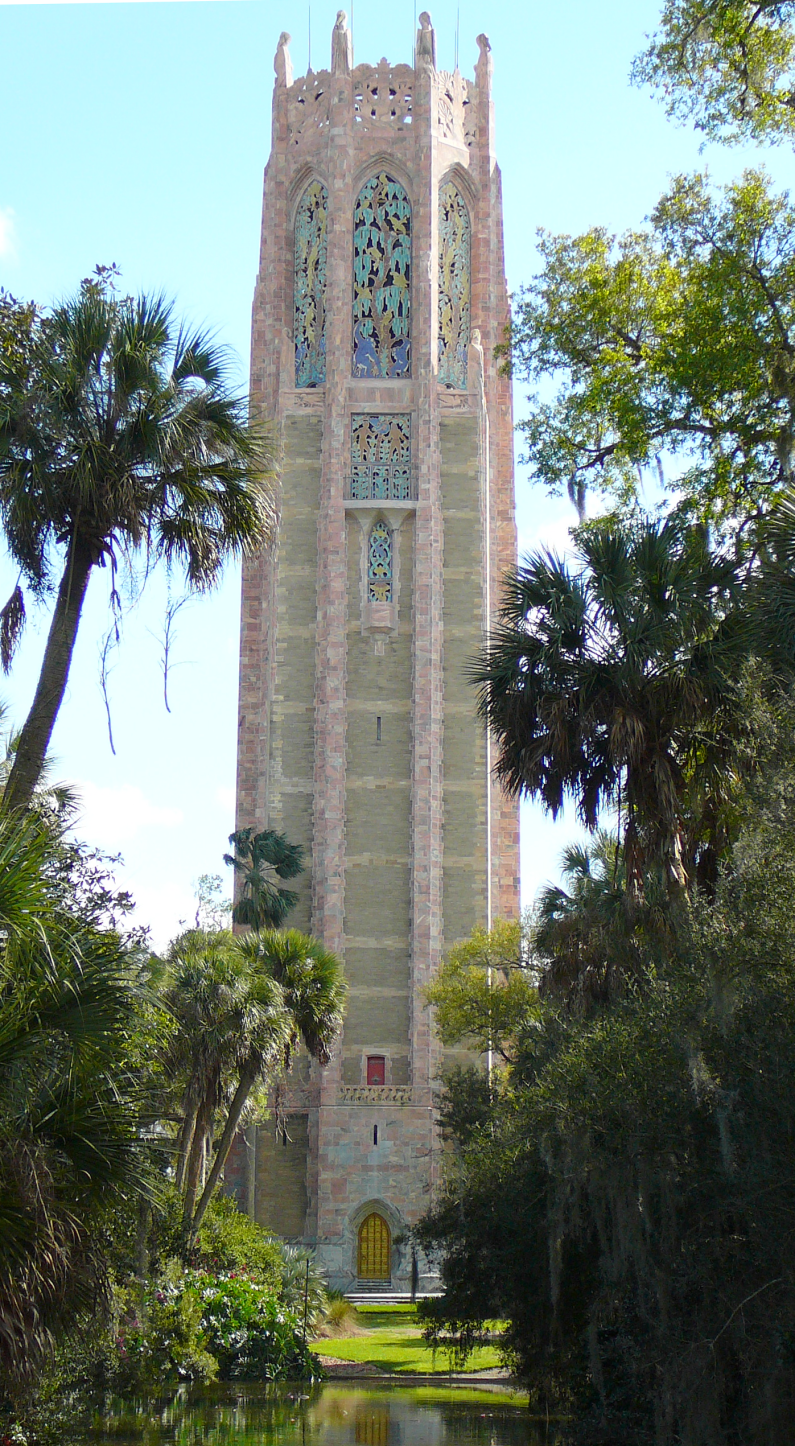
For more information, including a superb video about the Tower and Gardens, Coolidge’s dedication of it — and the importance of preserving it — at the Bok Tower website, under the “legacy” tab (https://boktowergardens.org/legacy/).

